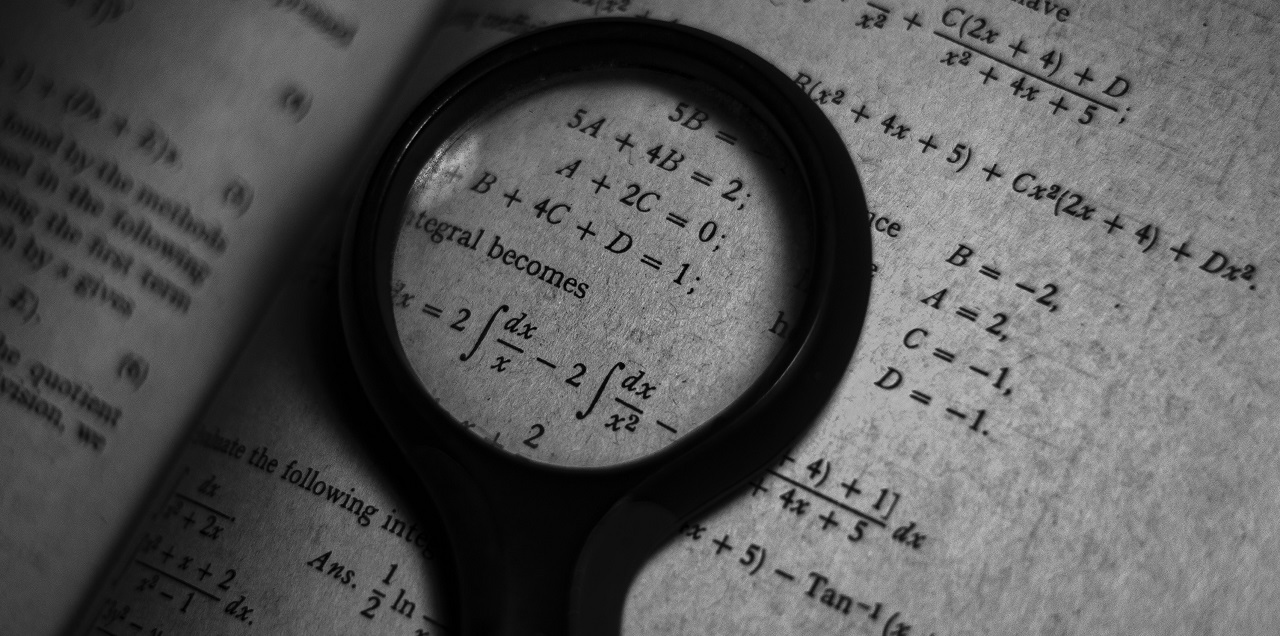
Many students hesitate about studying Economics at university level because they are worried about the amount of mathematics involved. This article aims to give you some ideas on:
- How much Maths is there in an Economics course
- How is Maths Used in an Undergraduate Economics Degree
- How to Choose an Economics Course with a Suitable Amount of Maths
- How to Prepare Yourself for the Maths in Economics at University
Planning to apply for a BSc. Economics programme? Be sure to check out our Economics Entry Requirements Table to compare grade requirements, and download our sample Economics Personal Statement which received offers from LSE, Warwick, Bath and Bristol. We also have an article on Economics books to read for your personal statement.
How much Maths is there in an Economics Course?
In a pure Economics degree, there is a substantial amount. For example, in the first year of an undergraduate Economics degree at LSE, there used to be two compulsory maths modules (Linear Algebra and Statistics), one Economics module, and an optional choice module. You can see that mathematics will already take up 50% of your studies, but Economics for only 25% at the start of the course! It is common for universities to provide mathematics modules in year one to ensure students are comfortable with Linear Algebra, Calculus and Statistics. You would have touched upon these from IB/A-Level maths, but they will more complex at university level. Therefore an intrinsic and fundamental understanding of mathematics will be very beneficial and important to studying Economics at university. These mathematical techniques will form the basis of understanding Economics using Economic modelling (in Micro and Macro) and Econometrics, which you will study in your second/third year. Hence in your second/third year, there is unlikely to be as much standalone maths modules, but more Economics modules with maths involved in them. We need to look into Econometrics and Economic Modelling to see how maths is used in Economics.

How is Maths Used in an Undergraduate Economics Degree?
Maths in Economics is mostly used for Econometrics and Economic Modelling. We will discuss both in more detail below with examples. If you would want to understand which actual maths topics are involved, you can read this post from The Student Room (TSR).
What is Econometrics?
Econometrics is the study of Economics using statistical techniques. For example, in order to figure out how income levels may affect consumption in a particular economy, we may run a statistical test to determine the relationship between the two variables – e.g. how much will consumption increase in the UK given a 1% increase in household incomes? We do this by gathering large data sets of people’s income changes over decades, and see how consumption changed throughout the same years. There may be a positive correlation between the two variables, and the results also need to be statistically significant for it to be meaningful – Yes, we are talking about a higher level of hypothesis/significance testing using correlation, like in A-Level maths. The problem with only looking at only household incomes and onsumption using correlation is problematic, because there can be other factors affecting consumption – like wealth levels of those households, the amount of confidence they have in the economy, and so on. That is where more advanced mathematical techniques come into play, like multivariate regression. You can think of it as a multidimentional way of using statistical correlation, to include more factors that may also explain the relationship between the two variables. Nowadays most Economic concepts and theories tend to come from Economic Models, and is then verified with statistical evidence from Econometrics.
What is Economic Modelling?
You may have learnt about basic mathematical modelling in A-Level maths, for example the exponential models you use to calculate population/bacteria growth. Economic Modelling is just using mathematics to demonstrate and explain Economic phenomenon. To explain this in a simplistic way, the diagrams you draw in A-Level Economics are basically mathematical graphs – in Microeconomics, Quantity is the x-axis and Price is the y-axis. You can have a mathematical equation representing each line or curve in your diagram. For example, you may have a linear equation (y = mx+c) for the linear demand curve, and a quadratic equation (y = ax^2+bx+c) for the average cost curve. Through the mathematical interaction of these equations, we derive Economic theory, such as how the market equilibrium is where demand meets supply. You can see the example below where we solve for equilibrium price using the intersection point of the two equations. Of course, the curves and interactions between equations are more complex at university as you can see from the Solow model example lower down the article. However, don’t be too discouraged as you will learn more in maths at university before tackling these topics.
Solving for equilibrium market price by using the equation for demand and supply:
The demand curve can be expressed as a straight line with equation y = mx+c, or x = y/m-c/m when rearranged to make x the subject. If we replace x and y with quantity demanded (Qd) and price (P), and 1/m with a and c/m with b (as they are both constants), then we will get the linear equation of demand Qd = a-bP. The variable a represents where the demand curve crosses the x-axis, and -b represents the negative gradient of the line. Hence if we increase a, there will be a rightward parallel shift of the demand curve. Similarly, the equation for a linear supply curve is Qs = c+dP. As we know, at the market equilibrium, quantity demanded and quantity supplied are the same, so Qd = Qs. Therefore we will be able to solve for market price using the simultaneous equations below:
Qs = c+dP
Qd = a-bP
Subtracting the second equation from the first, we will get Qs - Qd = 0 = c-a+(d+b)P. Simplifying further, we get P = (a-c)/(b+d). What can we get out of this model? As we previouly mentioned, an increase in a means a rightward shift of demand. We can see an increase in a will increase the value of P in the equilibrium price equation P = (a-c)/(b+d). This means we mathematically expressed that the equilibrium price will be higher when demand increases. Similarly, if supply c increases, equilibirum price P will fall.
University Economics Model Example
The Solow model is a very common year 2 undergraduate Economics model for undergraduates. The two videos below give an introduction with relatively little involvement of mathematics. If you are interested in the entire playlist, you can access them here.
However, you are likely taught in a more mathematical way, like in the left video below. An even more mathematical approach is taken by the right video.
So as you can see, a good grasp of fundamental mathematical techniques on particular topics like functions, and having some mathematical intuition is nearly essential to do well in a pure Economics degree.
How to Choose an Economics Course with a Suitable Amount of Maths?
There are a few aspects that you can look out for to understand how mathematically demanding an undergraduate Economics course is.
Pure Economics vs Combined Economics Course
The first component to decide on is whether you want to study a pure Economics course, or a combined subject course – such as PPE (Politics, Philosophy and Economics), Economics and History, Economics and Law etc. In general, combined courses tend to be less mathematical as they consist of another subject, meaning there is less Economics and maths to cover (the exception is mathematics and Economics). Hence, if you are not very interested in the mathematical aspects but would like some exposure to the subject, this may be the way to go.
Course Entry Requirements
Does the course you are interested in require an A* in mathematics or just a B in A-Level mathematics? Does the course prefer taking in students who have studied Further mathematics at A-Level, compared to just mathematics? What level of IB mathematics do they require, SL or HL? It is likely that the higher the entry requirements for mathematics to study the course, the more mathematically demanding the course is likely to be. This is because there is a higher expectation of students to have a higher mathematical fluency.
Percentage of maths Modules
It is important for you to look into the structure of the Economics courses you apply to. Don’t just apply to courses with the highest ranking in league tables! As each year of study is generally separated into modules, it will be good to understand what percentage of modules are maths based for that year. For example, the BSc. Economics course at LSE used to have two full maths modules in the first year out of four total modules to study (50%). Compared to the BSc. Politics and Economics course at LSE, there are two half maths modules in the first year, meaning one full module out of four (25%).
Requirements for Economics Modules
For the Economics modules in the course, you may be required to take specific maths modules at that university before studying them. This should be noted in the course description. It will be good to look at the pre-requisites of your mandatory and optional Economics modules in your course to understand this, and the level of maths required. If the module requires a year 2 Math course, it is likely to be more mathematical than one that requires a year 1 Math course.
Furthermore, the more non-mandatory modules (free options) there are in your course, usually in years 2 and 3, the more flexibility you have in choosing a less mathematical course. This will be something to consider if you want to vary the amount of maths to study in your Economics degree.
BSc. vs BA. vs MSc.
In general, a higher level Economics course tend to be more mathematical, meaning a MSc. Economics degree is likely to be more mathematically challenging than a BSc. Economics one. A BA. Economics degree does not always mean that it is less mathematical than a BSc. one due to different course naming conventions at universities, like the BA. Economics course at Cambridge. However, it can be an indicator – you will have to check the course structure.
Assessment Style
Finally, it is important to look at how you will be assessed in your Economics modules. Will it be more exam based or coursework based? If it is coursework based, will the coursework be based on an Economics model or more of an essay based study? If it is exam based, having a quick search online for past papers of that module may be helpful to understand how much maths there are. It may be more challenging if you have to take an Economics maths-based exam under time-pressure, so you may want to consider that as well.

How to Prepare Yourself for the Maths in Economics at University?
Mathematical ability and intuition can be trained if you are willing to put in the work. If you are not confident in mathematics but is passionate for Economics at university, you can overcome that barrier by being more prepared. Echoing this post from TSR, the two books below would give a great introduction into maths in Economics for those with a GCSE/A-Level maths background. Jacques explains the maths from the beginning such that it is quite suitable for self-teaching.
1. Mathematics for Economics and Business – Ian Jacques
2. Maths for Economics – Geoff Renshaw
For students that are more confident and have possibly studied Further maths at A-Level, the two books below are more concise and advanced. However, they are more comprehensive of the maths involved in Economics. The book by Chiang and Wainwright is a classic for Economics courses where it goes through the basics but presents the maths in a more formal way. A-level students may find the books below a bit trickier but getting exposed to how the mathematics is expressed will help you feel more comfortable at university.
1. Fundamental Methods of Mathematical Economics – Alpha Chiang and Kevin Wainwright
2. Mathematics for Economists: An Introductory Textbook – Malcolm Pemberton and Nicholas Rau
The final book would be more suitable for postgraduate Economics students that already has an established background in maths:
Mathematics for Economists – Simon and Blume
Still feeling unsure or uneasy about applying to study Economics at university? Just reach out to our highly qualified Economics advisor, and we can help to answer any questions you may have.




